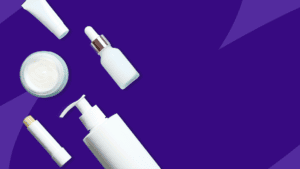When it comes to enhancing the length and fullness of eyelashes, two products frequently come up in conversations: Microbil and Latisse. Both are popular eyelash growth products, but each has its own unique features and benefits. This article will delve into the differences between Microbil and Latisse, providing a comprehensive comparison to help you decide which one might be the best for you.
What are Eyelash Growth Products?
Eyelash growth products are specially designed serums or solutions that aim to stimulate the growth of eyelashes, making them appear longer, thicker, and fuller. These products generally contain active ingredients that promote hair growth, nourishing the lashes and improving their health.
Ingredients in Eyelash Growth Products
The active ingredients in these serums vary widely. Some use synthetic compounds known for promoting hair growth, while others rely on natural extracts that nourish the follicles. Vitamins, peptides, and botanical elements are commonly found in these formulations, each playing a crucial role in supporting lash health.
Benefits of Using Eyelash Growth Products
Using these products regularly can lead to noticeable improvements in lash length and density. They can also strengthen the lashes, reducing breakage and fallout. For many users, the appeal lies in achieving a natural look without the need for extensions or heavy makeup.
How to Choose the Right Product
Choosing the right eyelash growth product involves considering your specific needs and preferences. Factors such as ingredient sensitivity, desired results, and budget should influence your decision. Consulting with a dermatologist or healthcare provider can also offer personalized recommendations based on your skin and hair type.
Understanding Latisse
Latisse is a well-known eyelash growth product that has been on the market for several years. It is FDA-approved and contains bimatoprost as its active ingredient. Bimatoprost is a compound that extends the growth phase of the eyelash hair cycle, leading to longer and thicker lashes.
Latisse Effectiveness
Many users have reported noticeable improvements in their eyelash length and fullness after using Latisse for a few weeks. Clinical studies have also supported these claims, showing that Latisse can significantly enhance eyelash growth.
Studies indicate that Latisse can increase eyelash length, thickness, and darkness within 8 to 16 weeks. The compound bimatoprost lengthens the anagen phase of the hair cycle, which is the active growth period. This prolongation results in more extended lash growth and a fuller appearance.
Latisse Review
Reviews for Latisse are generally positive, with many users praising its effectiveness. However, some individuals have experienced side effects such as eye irritation, darkening of the eyelid skin, and changes in eye color. It’s important to use Latisse under the guidance of a healthcare professional to minimize these risks.
Users often appreciate the convenience of Latisse, noting that the once-daily application fits easily into their routines. Nevertheless, side effects like redness and itching can deter some from using it long-term. Consultation with an eye care specialist is recommended to weigh potential benefits against risks.
Cost and Accessibility of Latisse
Latisse requires a prescription, which can make it less accessible for some individuals. The cost is generally higher than over-the-counter products due to its FDA approval and proven efficacy. Insurance may cover it in some cases, but typically it is an out-of-pocket expense.
Exploring Microbil
Microbil is a newer player in the eyelash growth product market. Unlike Latisse, Microbil is not FDA-approved, but it is marketed as a natural alternative to traditional eyelash serums. It typically contains a blend of vitamins, peptides, and botanical extracts to nourish and strengthen the lashes.
How Microbil Works
Microbil works by providing essential nutrients to the hair follicles, promoting a healthy growth environment for the eyelashes. The natural ingredients are designed to reduce breakage and enhance the overall appearance of the lashes.
The botanical extracts in Microbil aim to fortify the lashes, creating a protective barrier that reduces environmental damage. This protection can lead to healthier lashes that are less prone to falling out prematurely. Additionally, peptides in the formula stimulate the follicles, encouraging longer lash growth over time.
User Experiences with Microbil
Many users choose Microbil for its natural ingredient list and ease of use. Reviews often highlight its gentle formula, which is less likely to cause irritation compared to synthetic alternatives. However, results can be inconsistent, with some users experiencing dramatic improvements and others seeing minimal change.
Comparing Microbil and Latisse: Key Differences
- Approval and Ingredients: Latisse is FDA-approved and contains bimatoprost, while Microbil is not FDA-approved and relies on a blend of natural ingredients.
- Application and Usage: Latisse requires a prescription and is applied once a day to the upper eyelid margin. Microbil, on the other hand, is usually available over-the-counter and can be applied similarly to mascara.
- Effectiveness and Results: Latisse has been clinically proven to be effective, with results typically visible within eight to sixteen weeks. Microbil’s effectiveness may vary, with some users seeing improvements in a similar timeframe, though results are largely anecdotal.
- Side Effects and Safety: Latisse may cause side effects like eye irritation and skin darkening, whereas Microbil, being a natural product, is generally considered to have fewer side effects. However, users should still be cautious and perform a patch test before full application.
- Cost and Convenience: Microbil is often more budget-friendly and easily accessible as it doesn’t require a prescription, whereas Latisse might necessitate a doctor’s visit and higher costs.
Latisse Alternatives
For those who may not be suited for Latisse, there are several alternatives available. These include other prescription and over-the-counter serums that claim to offer similar benefits. It’s crucial to evaluate these products carefully and consult with a healthcare provider if you have any concerns.
Popular Alternatives to Latisse
Several over-the-counter serums mimic Latisse’s effects without requiring a prescription. Products containing prostaglandin analogs, peptides, or biotin are popular choices. They may not offer the same level of efficacy but can provide noticeable improvements in lash health and appearance.
Natural Alternatives
For those seeking natural solutions, serums rich in castor oil, almond oil, or coconut oil are often recommended. These oils are believed to condition the lashes, promoting a healthier look. While results may take longer to manifest, they offer a gentle approach with minimal risk of side effects.
Evaluating Alternative Products
When exploring alternatives, it’s important to consider the ingredient list and potential interactions with other skincare products. Reading reviews and consulting with a dermatologist can provide insights into a product’s effectiveness and safety. Always prioritize products from reputable brands that have undergone rigorous testing.
Making Your Choice: Microbil or Latisse?
When deciding between Microbil and Latisse, consider the following factors:
- Desired Results: If you’re looking for a product with proven clinical results, Latisse might be the better option. However, if you prefer a natural approach, Microbil could be worth trying.
- Budget Considerations: Latisse can be more expensive due to its prescription nature, while Microbil may be more budget-friendly and accessible.
- Health and Safety: If you have sensitivities or are concerned about potential side effects, Microbil might be the safer choice. Always discuss with a healthcare provider, especially if you have pre-existing eye conditions.
Personal Preferences and Lifestyle
Your daily routine and personal preferences can influence your choice. If you prefer a straightforward regimen, the once-daily application of Latisse might suit you. Conversely, if you enjoy integrating natural products into your skincare routine, Microbil or similar alternatives could be more appealing.
Long-term Commitment
Consider how committed you are to maintaining a lash growth routine. Latisse requires consistent use for sustained results, while natural alternatives might offer more flexibility. Understanding the commitment involved can help you make a more informed decision.
Consulting with Professionals
Consulting with an eye care professional or dermatologist can provide valuable insights tailored to your needs. They can help assess any underlying conditions that might affect your choice and ensure that your selected product aligns with your health goals.
Conclusion
Both Microbil and Latisse offer potential benefits for those seeking longer and fuller eyelashes. While Latisse boasts clinical backing and FDA approval, Microbil appeals to those interested in natural alternatives. Ultimately, the choice between these two products will depend on your personal preferences, budget, and how your body responds to each formula. Always prioritize safety and consult with a healthcare professional to ensure the best results for your eyelash growth journey.
Final Thoughts
Your journey to fuller lashes is personal and should be guided by thorough research and professional advice. Whether you opt for the scientifically-backed Latisse or the naturally-formulated Microbil, understanding your needs and preferences is key. Remember, patience and consistency are crucial in achieving the desired results, so choose a product that aligns with your lifestyle and goals.


